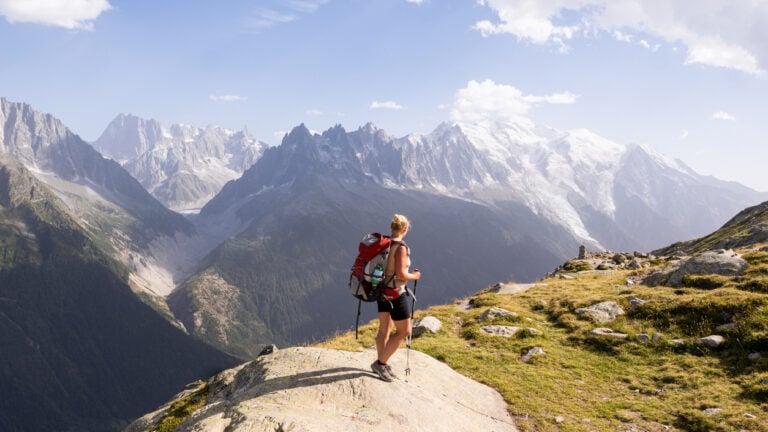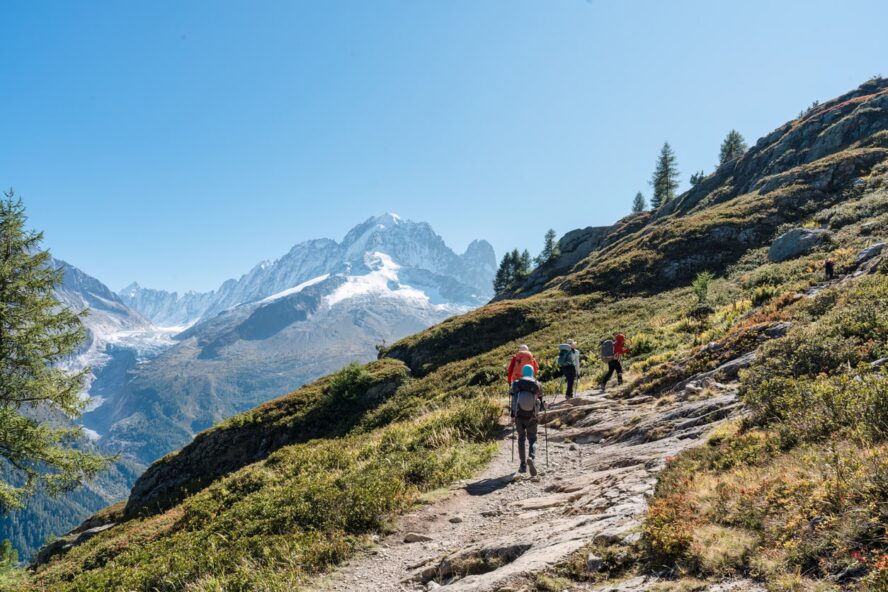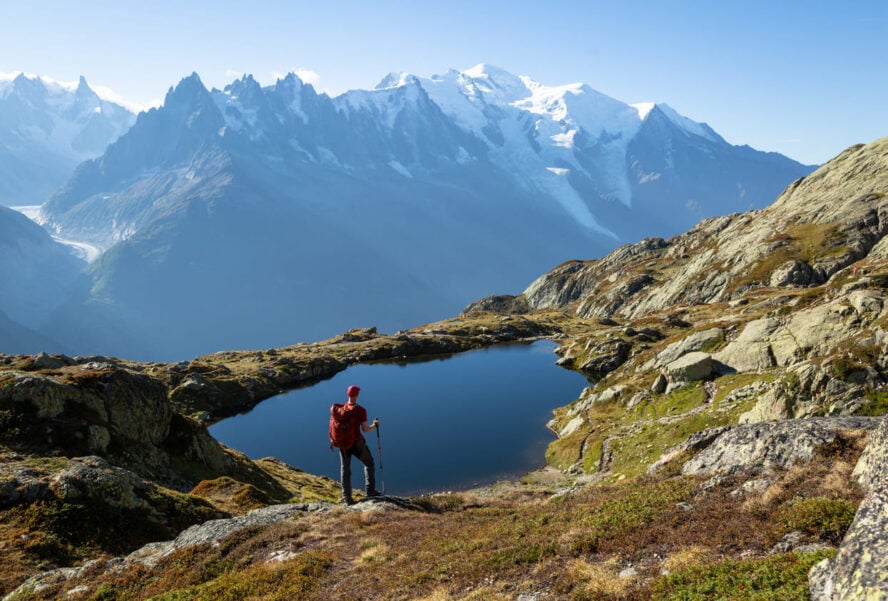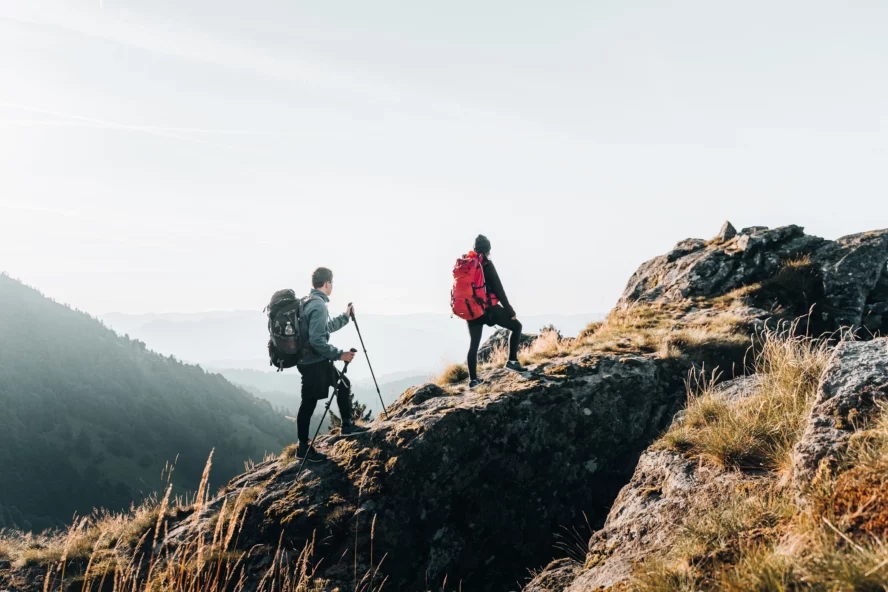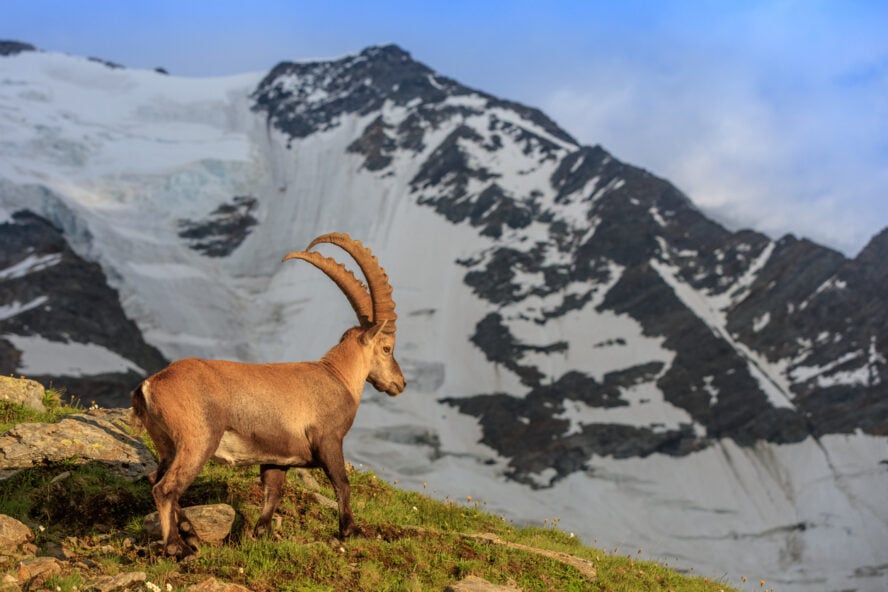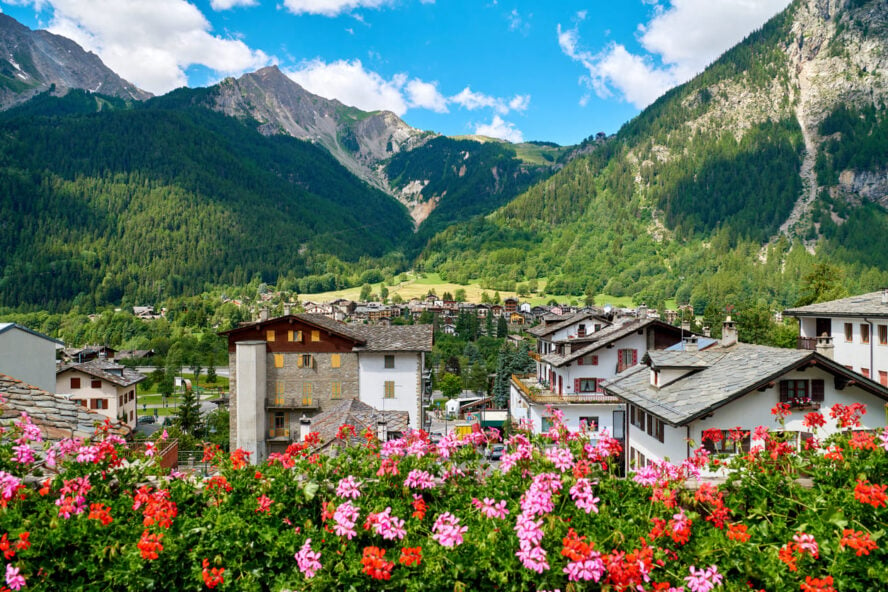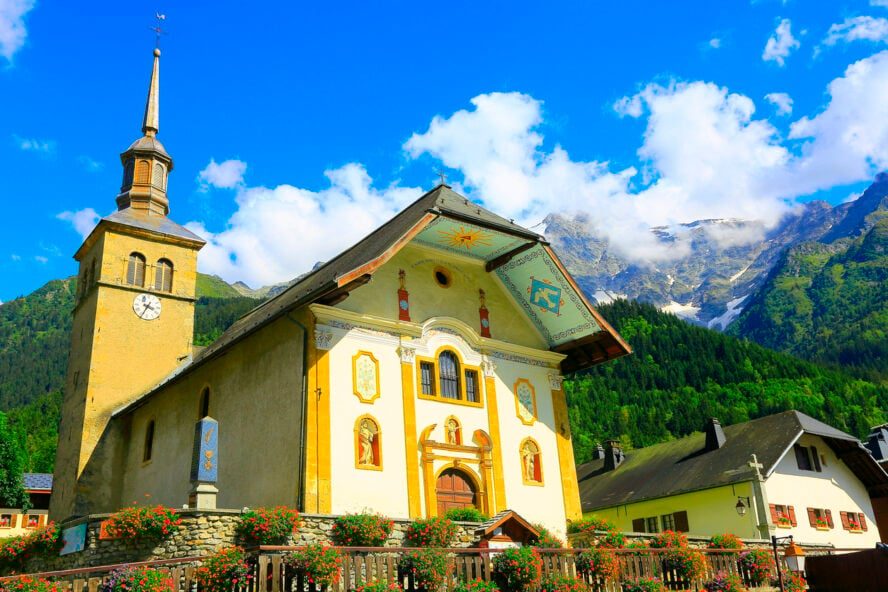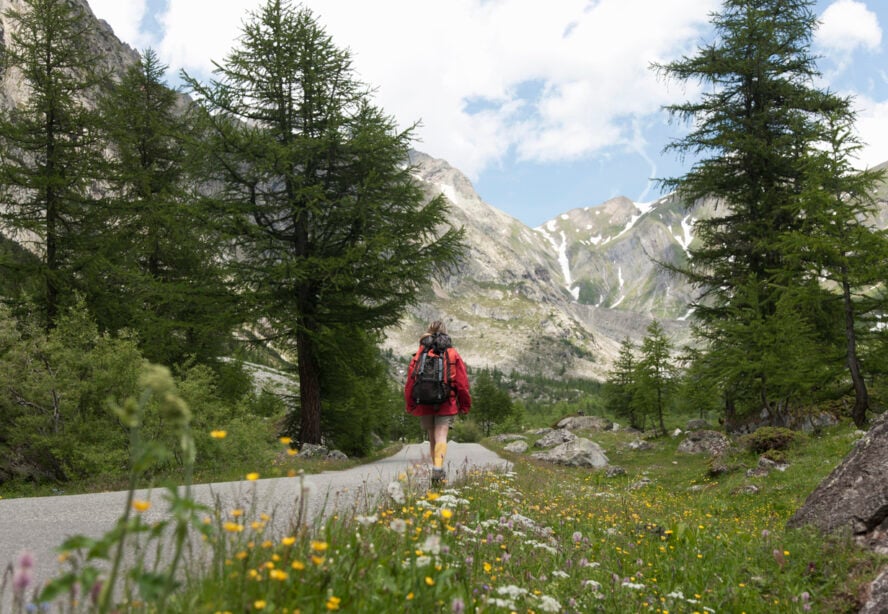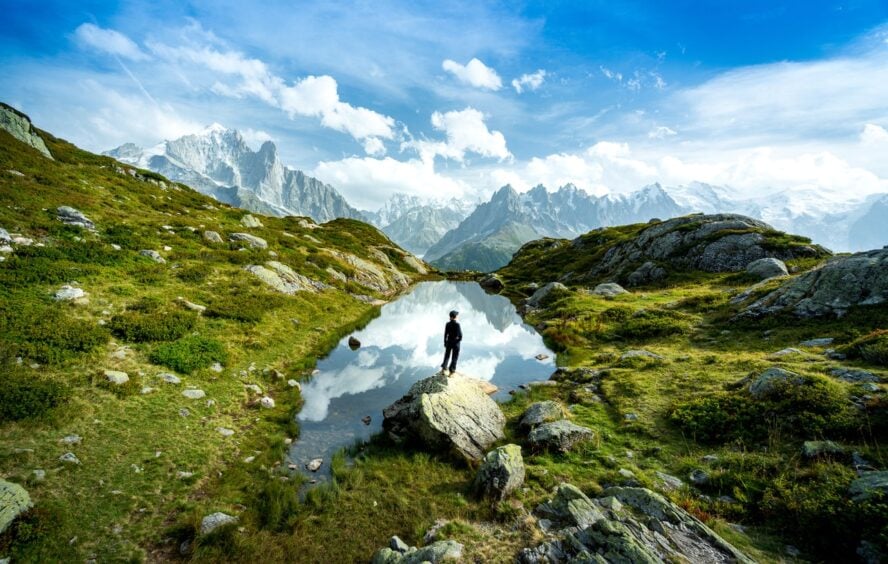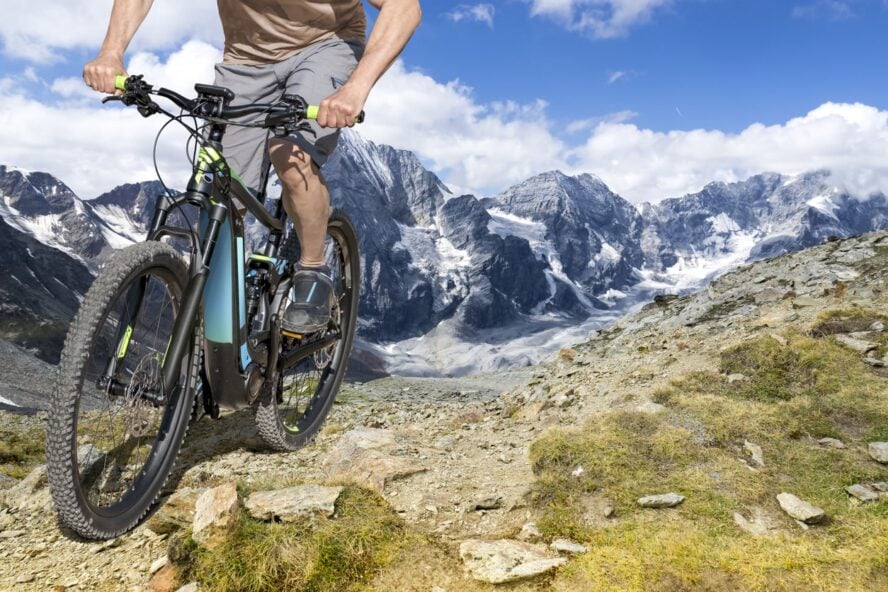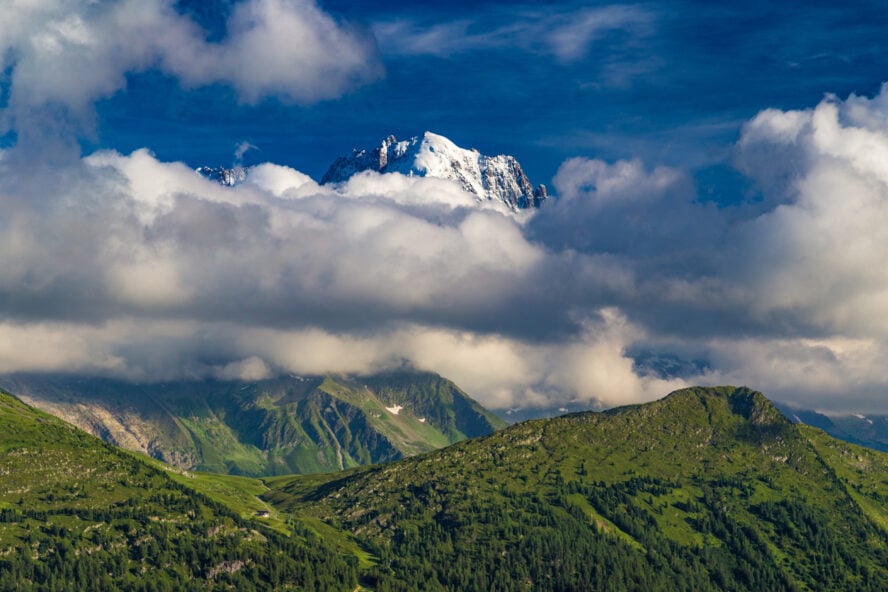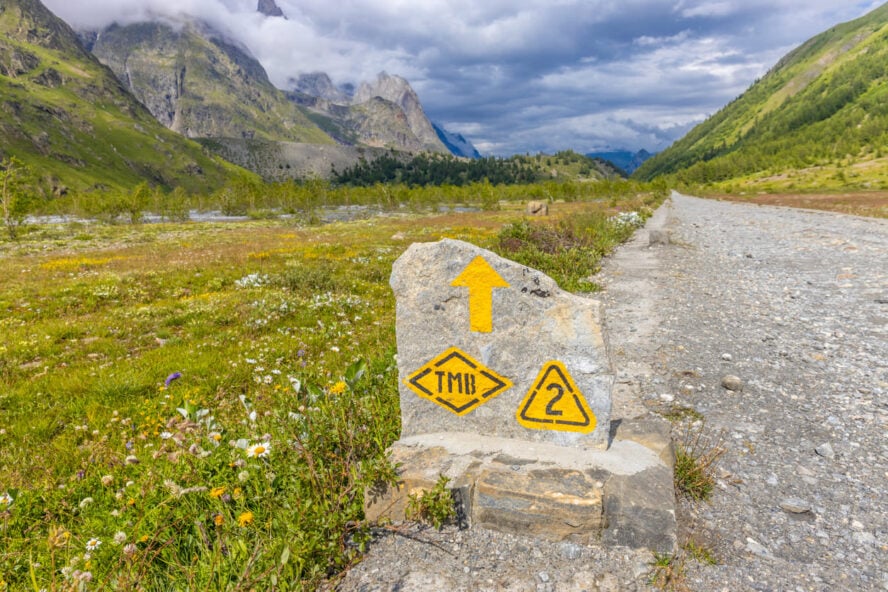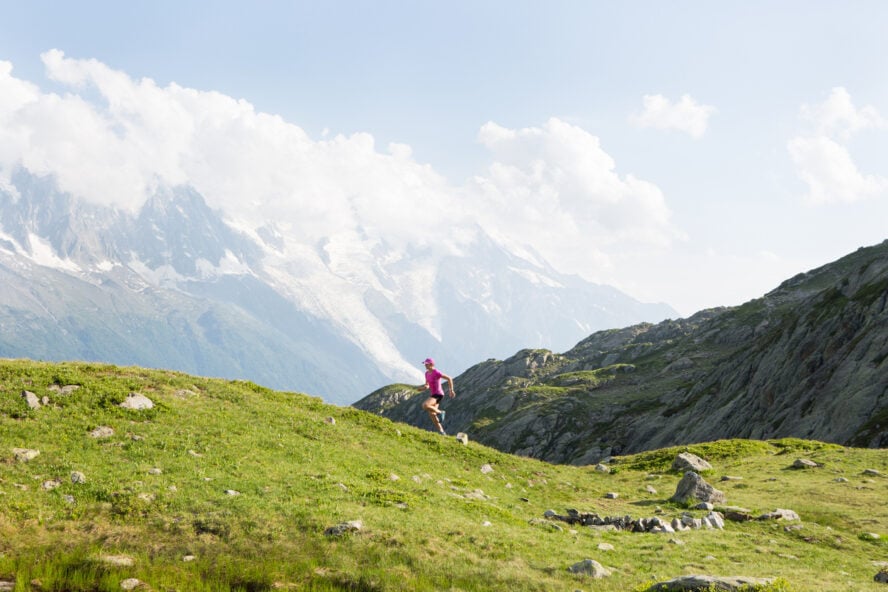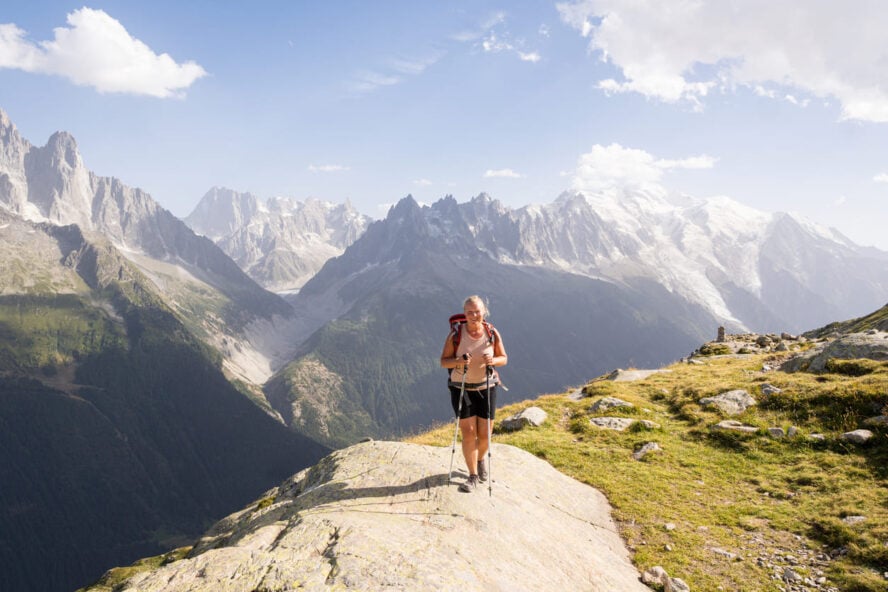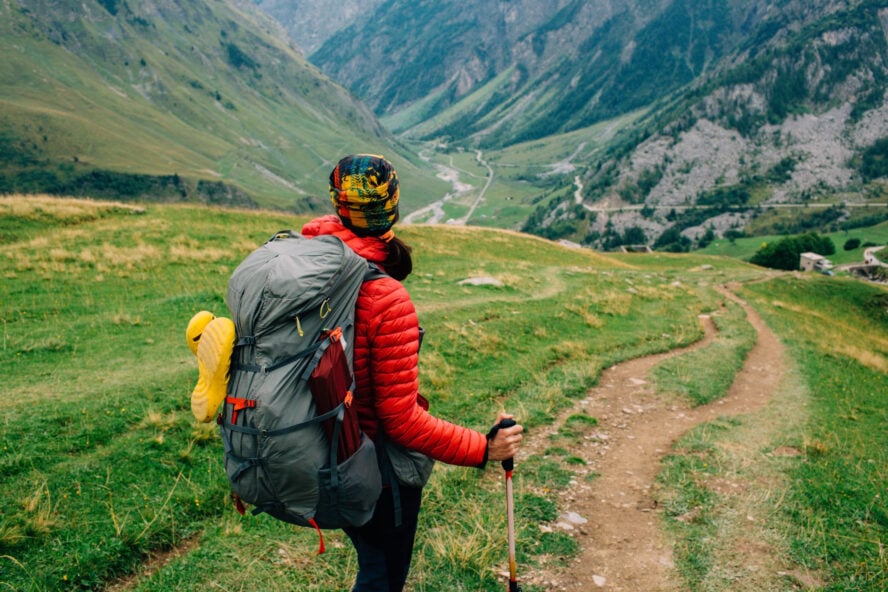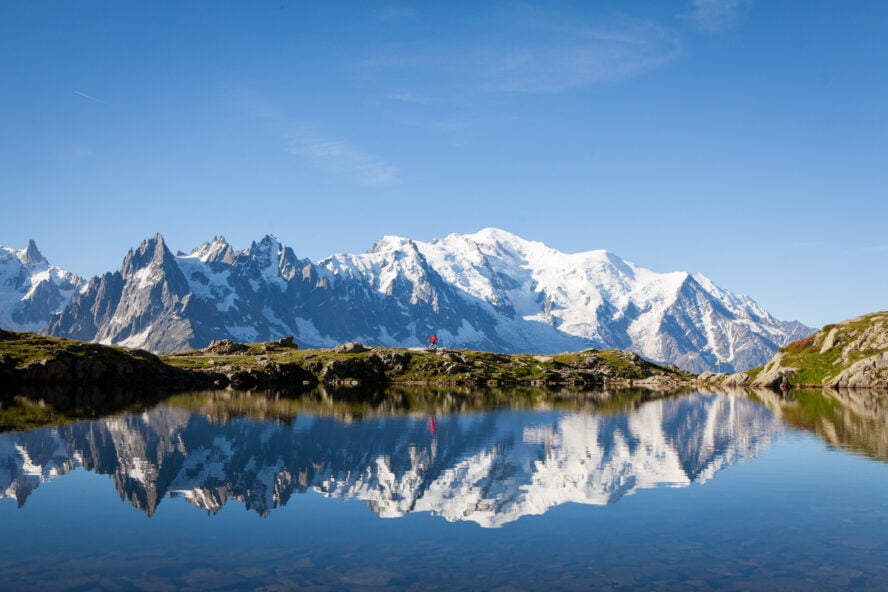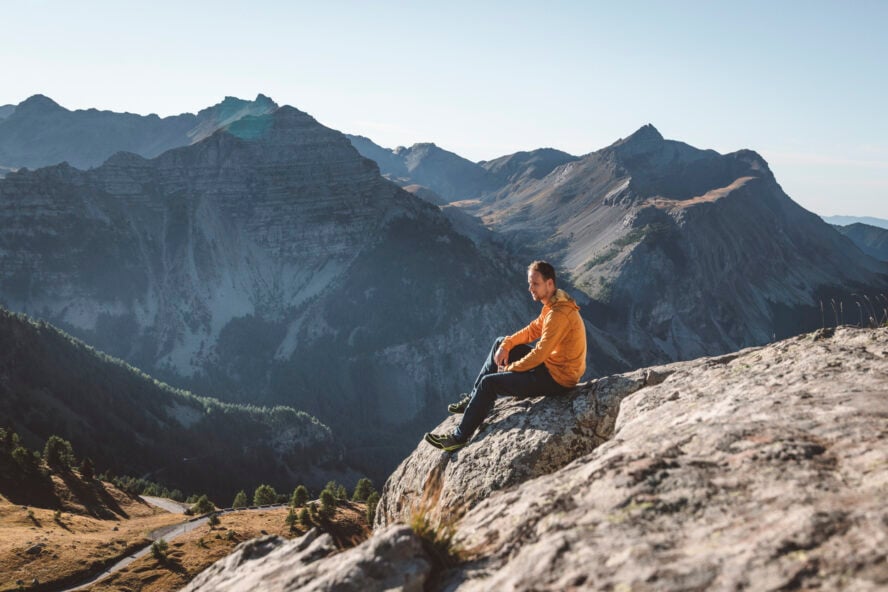The Tour du Mont Blanc (TMB) is one of the most famous trails in the world. It leads through France, Italy, and Switzerland, blending jaw-dropping scenery with rich cultural experiences. Whether you’re dreaming of hiking, mountain biking, or getting pampered in the Alps, pro guides Emma, Erik, and Bine are here to help you craft your perfect Tour du Mont Blanc itinerary.
With decades of guiding experience, they reveal how to tailor your journey around Western Europe’s highest peak to your fitness, style, and sense of adventure. Let’s dive into their insights to plan an unforgettable trip that’s uniquely yours.
This article was based on 3 different webinars:
Meet Your Guides: Emma, Erik, and Bine
Emma Jack
Emma Jack is a seasoned hiking guide with over 20 years of experience leading treks across the Alps, and she’s walked the Tour du Mont Blanc more than seventy times. Her passion for the trail shines through in her infectious enthusiasm, whether she’s pointing out chamois on a quiet ridge or sharing stories over a glass of wine in a cozy alpine hut.
Originally from the UK, Emma’s love for the Tour du Mont Blanc comes from its ever-changing scenery and cultural richness. “It’s my favorite trek in the whole world,” she says, and her knack for finding off-the-beaten-path routes ensures every group gets a unique experience tailored to their pace and interests.
Erik den Oudendammer
Hailing from the flatlands of the Netherlands, Erik den Oudendammer found his calling in the mountains, where he’s been guiding mountain biking trips for years. A cyclist since age 14, Erik’s heart lies in enduro-style riding, tackling both grueling climbs and thrilling descents.
Based in Verbier with his wife Jessica, he enjoys sharing his love for the TMB’s rugged trails with his clients. “I love being in the mountains and sharing that with people,” he says, whether it’s cheering on a 67-year-old rider bombing a descent or stopping for coffee at an alpine cheese farm. Erik’s trips are all about adventure and camaraderie.
Bine Zalohar
Bine Zalohar, a Slovenian international mountain leader, brings a refined touch to the TMB with his luxury hiking experience. A former professional freestyle skier turned ski mountaineer, Bine spends most of his time in Chamonix, his second home.
His guiding philosophy focuses on comfort and exclusivity. Bine avoids crowded trails for pristine reserves like Lac d’Emosson. “Less gear, better experience,” he insists, pairing 5-star hotels with curated hikes. Bine’s love for the Alps’ geology and wildlife, like spotting bearded eagles, makes his trips a blend of adventure and indulgence, perfect for those craving both nature and pampering.
Why the Tour du Mont Blanc Deserves a Spot On Your Adventure Itinerary
Emma said it all: “I can’t tell you how much I love the Tour du Mont Blanc—it’s my favorite trek in the world, and I’ve done it over 70 times! “
The route circles Mont Blanc, a 4,810-meter giant, through three countries in a whirlwind of cultures and landscapes. From France’s Chamonix Valley to Italy’s vibrant Courmayeur and Switzerland’s tidy Champex, every day brings new views—glaciers, wildflower meadows, and jagged peaks.
As Erik put it, “It’s unique that you ride across three countries… different cultures, different trails.” Bine, who crafts luxury hikes, adds, “The nature is pristine… you see all perspectives of the mountains.”
Hiking or biking it, the TMB’s magic lies in its variety and the chance to make it your own. This article, inspired by three passionate guides, will show you how to build an itinerary that matches your vibe, from rugged adventure to pampered exploration.
2. Crafting Your Tour du Mont Blanc Itinerary: The Basics
The Tour du Mont Blanc hike is a beast. 166 km if you’re hiking, up to 250 km for most biking itineraries, with about 10,000 meters of climbing and descending. That’s like scaling Everest, altitude-wise.
You’ll loop around Mont Blanc, starting in France’s Chamonix Valley, crossing into Italy via Courmayeur, then into Switzerland, and back to France.
Bine explains how the route was born from Horace Benedict de Saussure’s 18th-century quest to study Mont Blanc, now famous thanks to the Ultra Trail du Mont Blanc (UTMB) race, where elite runners tackle it in under 24 hours.
For mortals, it’s a 6–14 day adventure, if you’re hiking at a steady plod. Expect high passes like Col de la Seigne, charming villages, and views that change daily. “It’s not just Mont Blanc—it’s the whole range,” Erik says, promising “fantastic views every day.”
Picking the Right Duration: Highlights to Full Immersion
How long have you got? That’s the big question. Emma suggests:
Short Tour du Mont Blanc Itinerary (6–8 days)
Highlights trips use buses or cable cars to cut distances, ideal if you’re tight on time. But beware—some skip gems like Italy’s Val Ferret or Chamonix’s high trails. Emma’s 7-day itinerary starts Saturday, ends Sunday, hitting her favorite days without too much time off work.
Standard Tour du Mont Blanc Itinerary (9–11 days)
The full TMB for hikers (Emma’s go-to) or a 6-day biking blitz (Erik’s style). You’ll cover every pass and valley, soaking in the whole experience at a nice pace. “It’s not a race,” Erik says, emphasizing time for coffee stops and chats.
Extended Tour du Mont Blanc Itinerary (12–14 days)
Bine’s luxury trips spread the hike over more days, with shorter treks (6–12 miles) and rest days for spa visits or paragliding. Perfect for savoring towns like Courmayeur.
All three guides recommend rest days in Chamonix, Courmayeur, or Champex for recovery or fun. Read: cable cars or gelato binges. “Add extra nights at the start in Chamonix to acclimatize,” Emma advises, especially if you’re coming from sea level.
Accommodation Options: From Huts to High-End Hotels
Where you sleep shapes your TMB vibe. Options range from rustic to ritzy.
Mountain Huts
Emma and Bine love the Walter Bonatti Hut in Italy for its Mont Blanc views and cozy vibe. “It’s incredible they’re up there with showers and great food,” Emma says. Erik notes huts can mean dorms with up to four people, perfect for an authentic alpine feel, but basic.
2–3 Star Hotels
Emma’s sweet spot for comfort without breaking the bank. These family-run spots serve local dishes like fondue and are great for hikers and bikers. “We’ve known the owners for years,” Emma says, ensuring a warm welcome.
5-Star Hotels
Bine’s luxury trips feature places like Chamonix’s Cristal de Jade, with private pools and spas. “Everybody deserves a good rest,” Bine says, highlighting how private rooms and fine dining elevate a hike.
Luggage transfers, available for all styles, let you hike or bike light—Emma calls it “really good value.” Erik’s biking trips mix huts and hotels, while Bine’s van ensures your gear meets you at 5-star comfort. Book huts early, as they fill fast during peak season.
6. Navigating Your Tour du Mont Blanc Itinerary: Must-dos and Variants
The TMB’s beauty is its variety. The guides highlighted some must-do stages and quieter paths you can’t afford to miss.
Les Houches to Les Contamines – A Grand Start
Kick off your TMB from Les Houches, just south of Chamonix, with Emma’s go-to route over the Col de Tricot (2,120m).
This variant takes you across a Himalayan-style suspension bridge under the Bionnassay Glacier, where Mont Blanc looms large. “You’re right under the peak—it’s breathtaking,” Emma says. The trail weaves through pine forests and alpine meadows, offering early views of the Dômes de Miage.
It’s a 15 km day with a 1,000-meter climb, less crowded than the standard Col de Voza path, and perfect for easing into the TMB’s rhythm.
Bikers, like Erik’s groups, start with a lift from Verbier to warm up, but hikers can savor this scenic opener on foot, ending in the quaint village of Les Contamines for a cozy evening.
Val Ferret, Italy
If there’s one stage that steals the show, it’s Italy’s Val Ferret, a unanimous favorite among our guides.
Emma calls it “stunning,” with Mont Blanc’s southern face dominating the horizon as you trek along the valley’s gentle slopes. Her preferred variant, the Mont de la Saxe ridge, trades the busy valley floor for a higher, quieter path where chamois and ibex often graze among wildflowers. “It’s my favorite for wildlife and views,” she says.
Bine joins the main TMB trail here briefly, stopping at the Walter Bonatti Hut for its panoramic terrace and hearty Italian lunch. “It’s the nicest hut on the tour,” he insists.
For bikers, Erik highlights the descent into Courmayeur, a challenging drop through flowy singletracks and rocky switchbacks, with hikers cheering you on. This 18–20 km day (1,200m climb) is a must for its postcard-perfect scenery.
Lac Blanc and Lac des Chéserys
High above the Chamonix Valley, Day 8 delivers one of the TMB’s most iconic views at Lac Blanc and its quieter neighbor, Lac des Chéserys.
Emma prefers the latter, reachable only by foot, where Mont Blanc reflects in a turquoise alpine lake framed by jagged peaks. “It’s my favorite picnic spot,” she says, recommending a lunch break to soak in the serenity. The trail, a 16 km loop with a 1,100-meter climb, involves some scrambling but rewards with 360-degree views of the Aiguilles Rouges and Mont Blanc massif.
Bine opts for nearby secluded trails to avoid Lac Blanc’s busier summer crowds, ensuring a peaceful hike. Bikers skip this section due to its technical footpaths, but Erik’s groups might tackle a similar high-altitude day earlier for comparable vistas. This stage is a hiker’s dream. The perfect blend of challenge and beauty.
Col de la Seigne and Beyond
For mountain bikers, Erik’s itinerary shines on high passes like Col de la Seigne (2,516m), where Italy meets France. “It’s a fantastic descent,” he says, describing old military roads that twist down into France’s remote valleys.
These 51 km days, with 2,000-meter climbs, test your legs but deliver adrenaline-pumping drops through rocky terrain and smooth singletracks. You’ll pass alpine huts where cows graze, and hikers snap photos, stunned by your bike skills. “It gives you extra motivation to push harder,” Erik laughs.
Other passes, like those near Champex-Lac, offer similar thrills, with Erik’s off-trail detours adding adventure. These stages are for experienced riders who crave both the climb and the descent, with Mont Blanc’s massif as a constant backdrop.
Cordon and Lac d’Emosson Nature Reserves
Bine’s luxury hikes prioritize pristine, less-traveled areas like Cordon and Lac d’Emosson, part of France’s highest natural park. Cordon’s rolling meadows evoke Scottish highlands, with wildflowers and distant Mont Blanc views.
Lac d’Emosson, a hidden gem, offers a loop hike through rugged rock formations where bearded eagles soar. “We avoid crowds by timing it right,” Bine says, starting early or late to keep the trails quiet. These 6–12 mile days, with up to 1,300-meter ascents, blend natural beauty with cultural stops, like huts serving Savoyard beef soup.
Unlike those on the main Tour du Mont Blanc itinerary, these routes feel remote. They provide a sense of discovery for hikers seeking solitude without sacrificing comfort.
Mastering Tour du Mont Blanc itinerary variants for solitude and challenge
Variants are any Tour du Mont Blanc itinerary’s secret sauce, and our guides are masters at picking them. Emma’s Mont de la Saxe and Col de Tricot routes are tougher but quieter, dodging the hiker-heavy main paths. “I’m obsessed with going off the beaten track,” she says, noting their wildlife and panoramic payoffs.
Bine’s back trails, like those near Lac d’Emosson, steer clear of UTMB crowds. They offer serene hikes with geological wonders like limestone spires.
Erik’s biking groups veer off hiking trails onto singletracks, finding “adventure a little off the main path,” as he puts it.
These variants often add elevation or technicality—think loose rocks or steep climbs—but reward with solitude and unique views. Time your day early, as Bine suggests, or check the weather, as Emma warns, for risky paths like Fenêtre d’Arpette, to make the most of these hidden routes.
How to Prepare For Your Tour du Mont Blanc Itinerary
Building Your Fitness Base
To conquer the TMB, you need stamina, but don’t worry—you don’t have to be an Olympian.
For hikers, Emma emphasizes a “good slow plod” for daily 1,000-meter climbs, recommending regular walks to build aerobic fitness. Bine suggests starting six months out with 3–5 mile hikes five times a week on flat ground, then adding twice-weekly interval training for power on uphills like those to Lac d’Emosson.
Two months before, tackle 10–15 mile hikes to mimic TMB days. For bikers, Erik stresses mountain biking experience on rocky terrain, as you’ll ride 6 days straight. “The fitter you are, the easier it’s going to be,” he says, recalling a 67-year-old rider who outpaced younger ones with grit and preparation.
Packing the Right Gear
Your gear can make or break your TMB.
All guides agree on a 25–35 liter backpack for your Tour du Mont Blanc packing list to keep things light. Hikers need sturdy boots or trail shoes. Emma swears by La Sportiva Raptors, while Bine allows low-tops on dry, even days but insists on proper footwear for safety.
Pack a 2–3 liter water bladder (Bine suggests reusable bottles for sustainability), layers for changing weather, and waterproofs for sudden alpine storms.
Trekking poles are optional. Bine cautions, “Learn to use them first—start with one, then add another.” Emma warns against heavy mountaineering boots, which slow you down on varied terrain.
Bikers should opt for a full-suspension bike, Erik advises, as hardtails are less comfortable on bumpy descents.
Choosing the Best Season
Timing your Tour du Mont Blanc is crucial for a good itinerary.
Bine loves June to early July for wildflower blooms carpeting the meadows, though snow may linger on high passes.
Erik favors July to August for stable weather, ideal for biking’s technical trails.
Emma recommends September for fewer crowds, but warns some huts close by mid-month. “June can be snowy, September quieter,” she says, noting weather can shift fast at 2,500 meters.
Check forecasts and pack for cold snaps, even in summer. Bine’s luxury trips avoid peak UTMB weeks in late August to dodge crowds, ensuring a serene experience.
Logistics Made Simple
Getting to the TMB starts with flying to Geneva Airport, just an hour’s shuttle from Chamonix. Emma recommends Mountain Drop-Offs for ease.
Alternatively, a 2–3 hour train ride via Swiss railways works, as Erik notes their reliability. Book your trip by September 2023 for 2024, Emma urges, as huts and hotels fill fast.
Bine’s luxury trips include airport transfers, making logistics a breeze. Arrive a day early in Chamonix to acclimatize, especially if you’re coming from low altitudes, to handle the TMB’s high passes with confidence.
Insider Tips for a Seamless Tour du Mont Blanc Itinerary
How to dodge the crowds
The TMB can get busy, especially during UTMB season, but our guides know how to keep it serene.
Emma’s obsessed with variants like Mont de la Saxe, offering solitude and wildlife like ibex. “It’s my favorite for getting away,” she says. Bine times hikes early or late, hitting trails like Lac d’Emosson when hikers are scarce, ensuring you share the path only with bearded eagles.
Erik takes bikers off main trails, finding remote singletracks where “it’s just us and the mountains.” Plan your trip for early July or September, and stick to these quieter routes for a peaceful journey.
Beyond the hike: immersing yourself in Alpine culture
The TMB’s charm isn’t just its peaks. It’s the people and traditions.
Emma loves stopping at Bernard’s cheese farm in Les Contamines, where you can taste fresh alpine cheese and hear farmers’ stories.
Erik’s groups pause at high-altitude huts, chatting with cheesemakers milking cows on the spot. “It’s special,” he says, savoring these authentic moments.
Bine’s lunches at huts like Walter Bonatti introduce you to Savoyard cuisine, which is all about hearty beef soup or fresh baguettes. These stops aren’t just refueling, though. They’re a chance to connect with locals and soak in the Alps’ living heritage.
Tips for staying safe on the trail
Safety comes first in the high Alps.
Bine insists on single-file hiking on narrow, technical trails to keep groups secure, saying, “It’s about a safe experience, not my ego.”
Erik’s biking groups stick together, offering mental support on tough climbs or tricky descents, like when a 67-year-old rider inspired everyone by powering through.
Emma cautions against variants like Fenêtre d’Arpette in bad weather, as rain can make rocky paths treacherous.
Always check forecasts, follow your guide’s lead, and lean on their knowledge—Bine’s B-plans and Erik’s group dynamic ensure you’re never out of your depth.
How to book your trip like a pro
To secure your spot, act fast. Emma advises booking by September this year for summer next year, as huts and hotels get snapped up early. Bine’s luxury trips fill fast every year—check availability online.
Erik’s biking adventures through MTB Verbier also require early reservations, especially for peak July–August dates. If you’re flexible, Bine’s trips offer customizable days, letting you skip a hike for rest or add activities like paragliding.
Early planning means you get your ideal itinerary and avoid missing out.
Why you should plan rest days on your Tour du Mont Blanc Itinerary
Rest days are your secret weapon for a perfect TMB.
Emma suggests starting in Chamonix with an extra day to acclimatize, explore shops, or ride the Aiguille du Midi cable car for 3,750-meter views.
Bine’s luxury trips build in free evenings for massages at Cristal de Jade or strolls through Courmayeur’s charming streets.
Erik’s groups might hit a small bike park on the final day for extra laps if energy’s high.
Use these days to recharge, soak in the alpine vibe, or try adventures like paragliding, ensuring you finish the TMB refreshed and exhilarated.
Build Your Dream Tour du Mont Blanc Itinerary
The Tour du Mont Blanc is a love letter to adventure—stunning vistas, border crossings, and stories shared over cheese and coffee.
Choose your style, duration, and comfort level, pack light, and train smart. Craft your perfect TMB itinerary and make it a reality!

